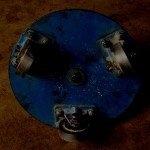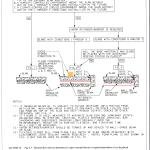Noteworthy News from the ACI 302/360 Meetings
It was a very busy schedule at the recently concluded spring ACI convention in Kansas City. The ACI 302/360 meetings offered insight into the future of our industry and I had the opportunity to hear several informative presentations, as well as participate in some great discussions. A lot of information was shared and I’m still going through a lot of it but there are a few items that I found to be the most noteworthy, specifically as they pertain to concrete fibers.
1.Shake-on-hardeners – George Garber of Face Consultants gave an excellent presentation comparing the performance of various non-metallic shake-on-hardeners with that of plain concrete. An interesting facet of his presentation was how he was able to compare slabs from buildings which had used both plain and shake floors. This meant the same concrete, concrete contractor and finishing techniques were used on the project but the results varied. George used a Chaplin testing apparatus, pictured, to conduct these tests. In every instance the plain concrete performed better than the slab treated with a non-metallic hardener. He also compared trap rock and proprietary dry shake as well. It was interesting that in only one instance did the slab with metallic hardener out-perform the plain concrete floor.
Photo 1
Chaplin Testing Apparatus
Photo 2
Graphic representation of George Garber’s Findings
2. Vapor retarder/barrier – Vapor retarder/barriers have become a major point of discussion at ACI over the past several years. Admittedly, the vapor retarder/barrier can potentially cause some difficulties, however, these issues are actually less costly than the performance failures that occur due to excessive moisture transmission through the slab. To help clarify, a flow chart was developed and presented which helps determine when a vapor retarder/barrier is required and where it is to be placed. The new flow chart will appear in ACI 302.1R, ACI 302.2R and ACI 360. For those of you interested in seeing the chart prior to its publication, I have placed my copy here.
Photo 3
ACI Vapor Barrier Flow Chart
Curling – With the placement of a vapor retarder/barrier directly under the concrete slab, curling has been reported to become a problem at the joints. Several studies have been conducted that analyzed this potential for increased curling. Rick Smith, of SSI, conducted his own analysis on this topic, and provided us with an excellent presentation highlighting his findings. He found that slabs placed directly on the vapor retarder/barrier actually curled less compared to slabs placed directly on the sub-base. We at Concrete Fiber Solutions have done our own studies and have found these same results and will be sharing that report on our website in the very near future.
Dominant joints – Dominant joints are an even bigger problem than curling when the vapor retarder/barrier is placed directly under the slab. Not all joints activate uniformly. This results in some joints opening wider than others, and these wider joints are called dominate joints. Dominant joint behavior is made worse by the ever-increasing use of vapor retarder/barriers placed below the slab. The vapor retarder/barrier reduces base friction and makes the dominant joint more noticeable and problematic. There is a way to use this vapor retarder/barrier to your advantage and I will share that with you in a future post.
You will be hearing more about each of these topics in the near future, whether it is from me, ACI, or another concrete expert. I can’t help but feel vindicated in that the industry is finally seeing enough research to substantiate claims that I, and other steel fiber supporters, have made regarding the exceptional performance of steel fibers. If your project can benefit from reduced curling, extended joints, lower costs, less maintenance, and/or little to no cracking, concrete steel fibers should be in your future plans.



